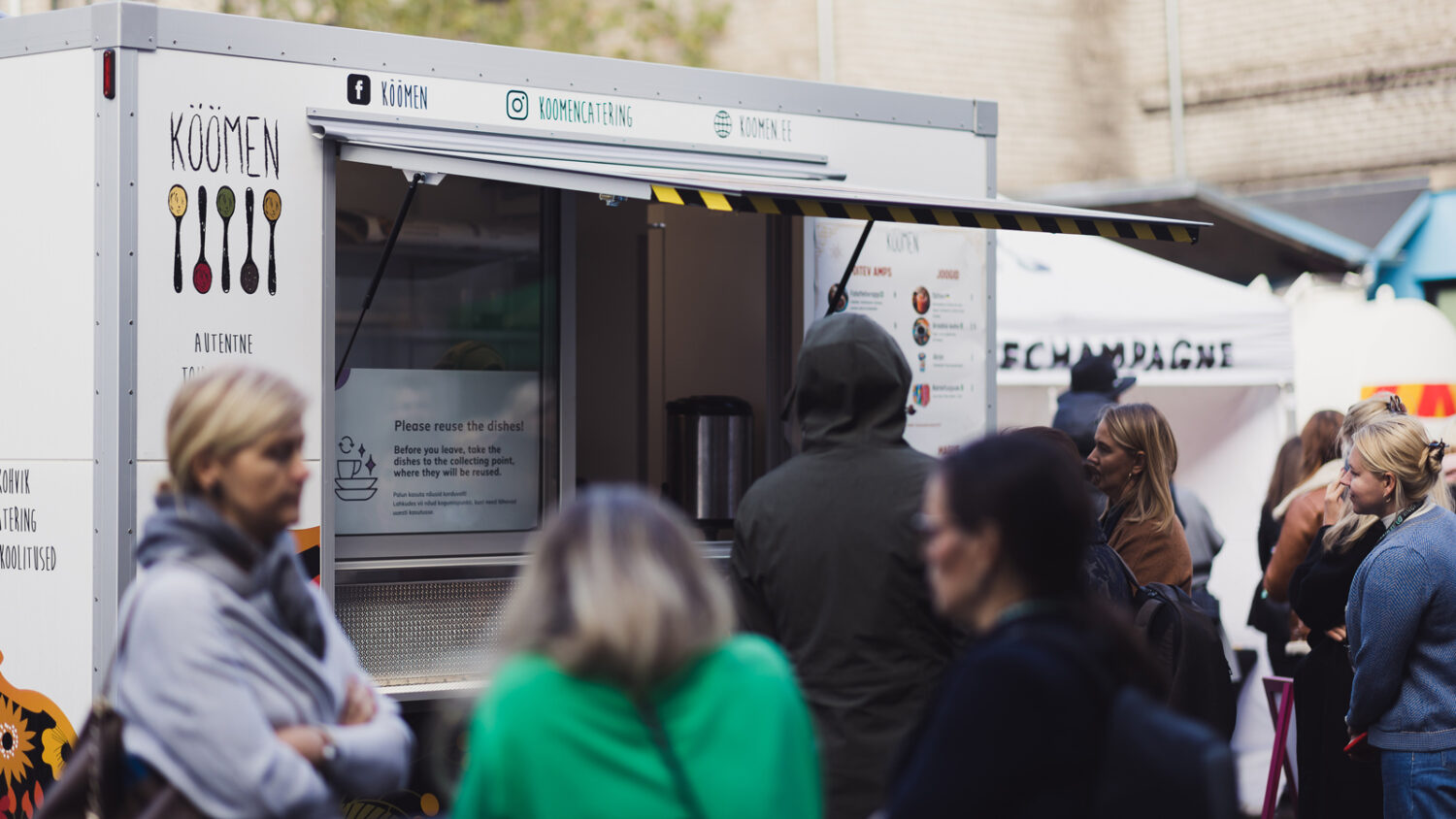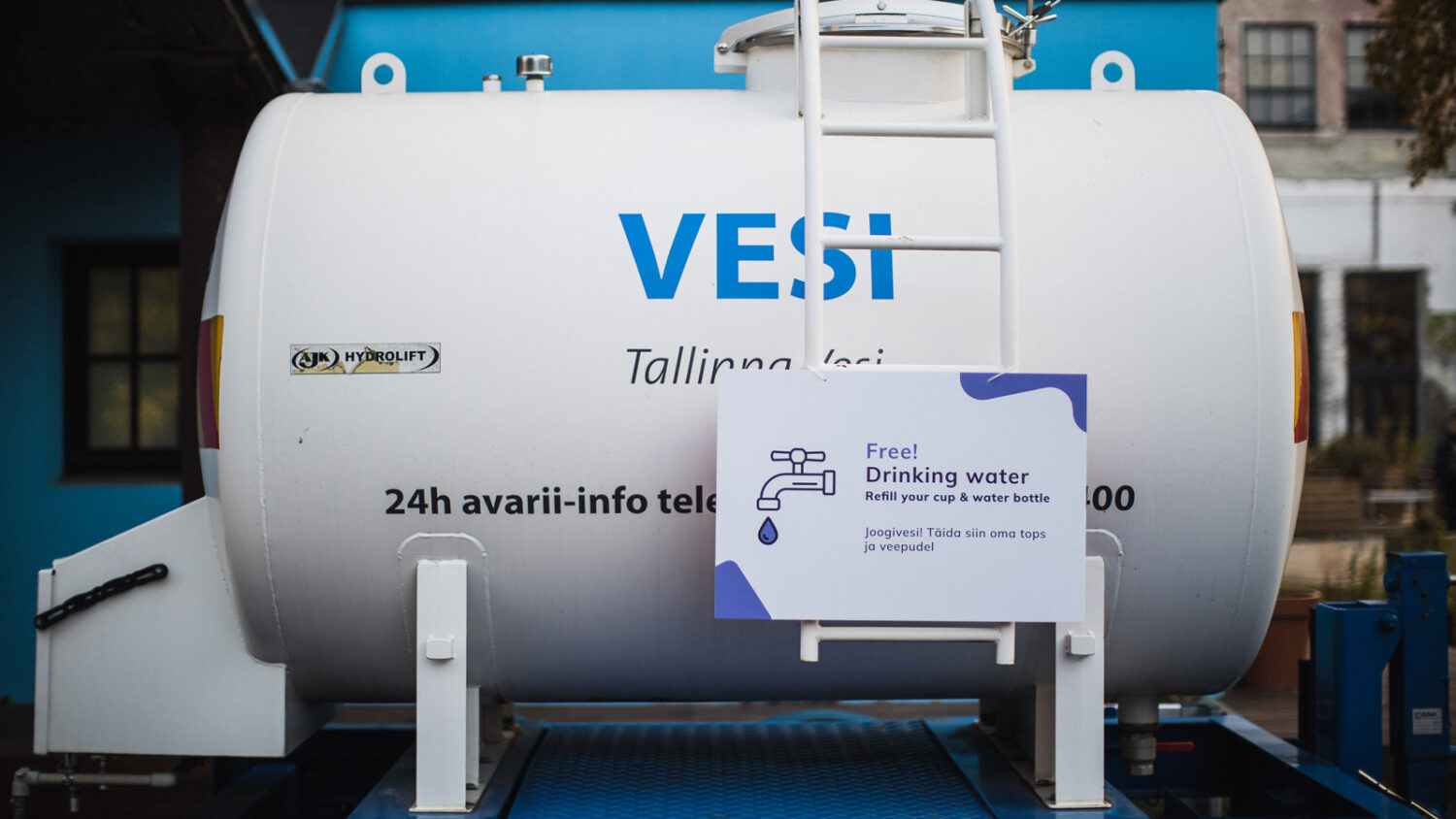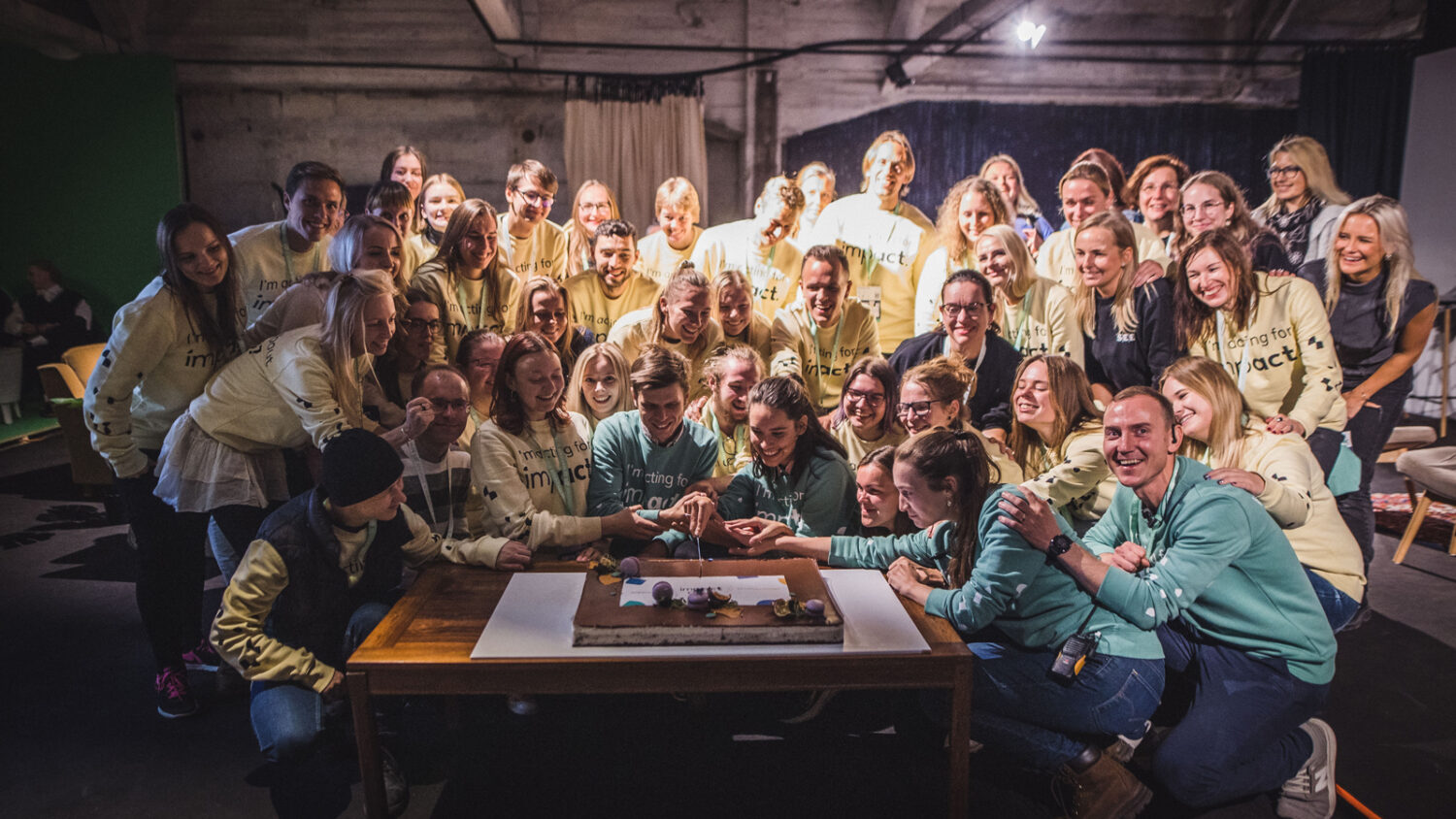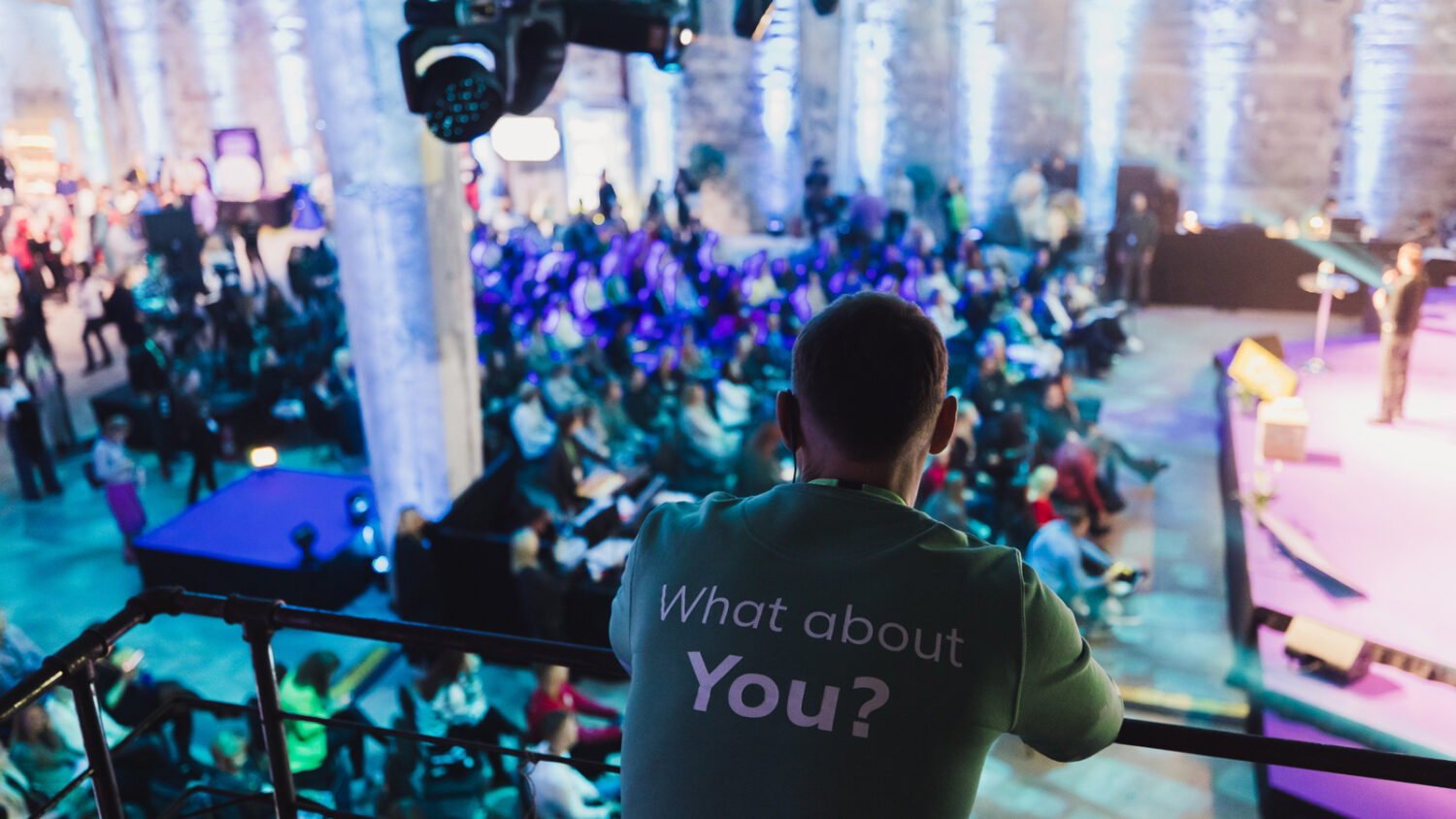Event management is something that produces a large number of disposable items – whether it’s disposable carpets, lots of tape or a lot of fireworks that are sometimes just (carelessly) released into the sky. However, there is a saying: where the problem is the biggest, the solution is the closest.
Just as the development of the transport sector – which deals with large amounts of emissions –, can change a lot of what happens to the climate around us, so can the development of one festival make the one-off become sustainable.
Let’s take a look now how Impact Day helps (mainly based on the 2022 event) to achieve the UN’s Sustainable Development Goals and how every other event organizer can do it. Of course, we’ll apply a very large part of what we did in 2022 also to Impact Day 2023 which takes place 5–6 October.
Goal #1, #2 & #10: No poverty, Zero hunger & Reduced inequalities
The following examples are not direct connections to these goals, but rather indirect ones. But, for example Impact Day 2022 offered 100 refugees from Ukraine the opportunity to come and be part of the Impact Show. We also asked all festival guests to bring their own food box, and if there was food left over that a person could not eat, she had the opportunity to take it with her.
Goal #3: Good health and well-being
No alcohol was served in the entire festival area. Not even during the after-party, when, according to some, its availability should be a natural part of the event. For example, the artists who performed at Impact Show also asked to have alcohol in their backstage, but after a short explanation they were all ready to cancel their request – for the sake of better health and to lead an example.
There were also food trucks organized by the festival itself – Köömen and The Naturist offered only vegan food.
In addition, Vaikuseminutid and MyFitness were included in the conference’s program. The aim was to offer people mental and physical breaks. Various additional tips from Peaasi were also shown on the screens to stimulate people’s senses.
All this was done so that, in addition to the intensive program that ran on three stages at the same time, people would have time to keep their spirits up. We wanted (and of course we want it at future events as well) that the guests could leave the event as fresh as possible – just as eating gives energy, gaining new knowledge should also refresh the spirit, not tire it.

Goal #4: Quality education
In order to promote the participation of students in the festival (in total, approx. every seventh participant was either a student, teacher or lecturer), we offered a discount code to all of the aforementioned participants. Also, at least one session was recorded by them, so there is also the possibility that it will be used as an educational material in schools.
Goal #5: Gender equality
Numerically there were more women than men among the participants. However, the difference was very small, so equality was achieved very well.
Goal #6: Clean water and sanitation
It is rather an indirect connection between the goal and our activity. On the positive side, however, it can be pointed out that Tallinna Vesi offered free tap water at the festival, which everyone could take in a bottle they took with them. It was also possible to drink from reusable glasses provided by RingKarp.

Goal #7: Affordable and clean energy
All the energy used at the festival was green energy. The energy-intensive heating of diesel cabinets was solved with the help of NesteMY Biodiesel, which is made from renewable raw materials vs. conventional fossil fuels, which are mostly used in such cases.
Goal #8 & #9: Decent work and economic growth & Industry, innovation and infrastructure
The focus of the entire festival is sustainability, which naturally includes people’s mental health and how to deal with it wisely. In addition, we are obviously focused on dealing sustainably with the environment around us as well.
The festival’s program is built around the idea that more companies like this (with sustainability at the core) will be created and they will grow bigger. We want the economic growth to come holistically and sustainably, rather than merely with short-term economic goals in mind and at the expense of burned-out people.
A good example in this regard is the festival’s organizing team itself, whose most important goal before the festival was to get full hours of sleep vs. to do all sorts of things at the last minute and at the expense of sleep. This way, on the one hand, it ensures people’s satisfaction with their work and, in the long term, certainly creates greater economic growth. Instead of constantly hiring new people to replace those who left, you can focus on step-by-step development over a longer period of time.
Goal #11: Sustainable cities and communities
One of the biggest strengths of the festival is the place where it takes place (the Põhjala factory) and being in the middle of its community. Also, all the logistics have been thought through in a way that people can easily arrive at the festival either by bus, tram, bike or scooter. In addition: the last year’s festival was organized with 14 co-organizers precisely so that the change would take place in the community, rather than being a one-off.
Goal #12: Responsible consumption and production
The festival tried to minimize the consumption of disposable items as much as possible. We couldn’t do it 100% yet, but considering the average level, we surely were able to do it quite well:
- People came to the festival with their lunch boxes and drinking utensils; we offered tap water;
- Only reusable carpets were used on the stages. Different decorations were fixed with “crocodiles” instead of cable ties and tape;
- The performances and presentations of the festival were viewable for three months, after which we deleted them to reduce digital waste;
- Flag chains, plant decorations and stage furniture were rented, as well as lanyards. All of them have already been in reuse several times;
- All garbage was sorted into a minimum of three, but mostly into five categories. All cigarette butts were collected and were later processed by Filaret;
- The food left over from the festival was taken to the food cupboards.
Goal #13: Climate action
Based on the above, we were not able to organize the 2022 festival in a 100% climate-neutral way. For example: despite repeated communication regarding transport and the use of public transport in particular (we offered discounted bus tickets when coming from other parts of Estonia; we invited people to come with shared cars; public transport in Tallinn was free for visitors one day before, on the day of the festival and on the day after), coming by car and the resulting footprint was something that was our biggest bottleneck last year. We are diligently working on improving that this year.
Goal #16 & #17: Peace, justice and strong institutions; Partnerships for the goals
The entire 2022 festival was co-organized by 14 organizations (the 2023 festival has at least the same number of organizers), with whom the entire content of the festival was shared – both its success and difficulties.
Also, the current article is made so that every event organizer can learn a trick or two from here and what to do even better than we did in 2022 – so that we too can then learn from others.

Goal #18: The vitality of the cultural space
Only Estonian artists performed at the Impact Show. Among them, for example, the Shate dance school and Kõku’s hearing-impaired dance troupe.
***
Of course, there are more activities than listed here that we did (and will do in 2023) for a better world. In the same way, there are some things that we can still do more and/or better, which is the most exciting part of creating change. We are encouraged by the fact that we can turn the current logic upside down and turn a traditionally one-off and burnout flagship (e.g. a regular large festival) into a really calm, sustainable sailor.

